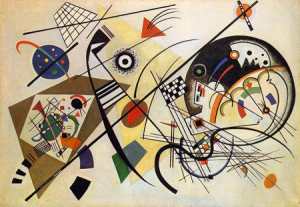Quadratic vs Linear Thinking

Others tend to think “quadratically”. Quadratics is a term in mathematics which simply describes curves and circles. For example, circles, represented by quadratic equations, have no beginning or end. Perhaps life has no beginning or end, just different places on a curved line composed of an infinite number of life experiences, in different forms. Perhaps philosophy needs to think in terms of curves and circles rather than straight lines, quadratically instead of linearly. Nature, after all, is not composed of basically straight lines. Perhaps man's, or for that matter man’s life experiences and purpose, would be better understood, if we contemplated it in a quadratic format rather than a linear one. Perhaps, we need to think more in terms of circular thoughts or what mathematics calls higher order equations.
At the same time, we need to take concepts of individual premonitions, science, philosophy, and religion, and stop isolating them into uniquely different topics. We need to mesh them together into a comprehensive picture.
One person contemplates the purpose of life and another analyzes the DNA structure. One person meditates upon the significance of man’s actions upon his eternal soul and another develops a code of medical morality. One person considers the source of man’s origin and another digs for the missing link. One person reflects upon reincarnation and another investigates the definition of when life begins and ends. Although these people seem to be investigating different things, they have more in common than is commonly realized.
In addition to thinking quadratically, we need to also apply matrix analysis to our thinking and begin to coordinate the merging of our thoughts of science, religion, and philosophy into a universal picture.
We are at a point, in our history, where we have the information needed to construct a basic picture, a model, of man and man's purpose for existing in the universe. And, this point, in our history, proves the quadratic model, because yogic philosophers arrived at the same point thousands of years ago.
